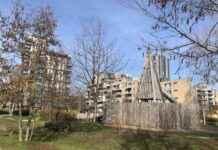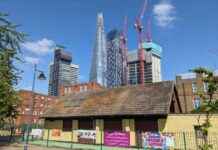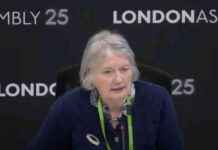There was a single borough by-election on Thursday, 22 May 2025, a Liberal Democrat defence in Sutton’s Carshalton South & Clockhouse ward. With next year’s full borough elections less than a year away, its result could be a significant straw in the wind. Although Sutton has been Lib Dem-controlled since 1990, it is not – in contrast to the party’s other strongholds, Richmond-upon-Thames and Kingston-upon-Thames – without competition or political variety. There is a north-south social and political divide, tracking the railway line between West Croydon and Epsom. North of the line definitely feels like London: less well-off and containing most of the outer London borough’s council estates along with private blocks of rented flats and terraced housing. This is the Lib Dems’ stronger territory in local elections, and they successfully defended a seat there last month.
South of the line feels like Surrey – curving avenues, large detached or semi-detached houses, expensive cars in garages, gently hilly land. This is where the Conservatives have tended to do better. Carshalton South & Clockhouse is definitely in this territory. Its northern boundary is at Carshalton Beeches station, a place whose name is redolent of suburban commuter comfort. The ward was almost called Carshalton Beeches & Clockhouse in the last boundary review, but the local Labour Party – which does exist – argued that it was a bit too specific. The ward’s demographics confirm it as a place where outer London starts to shade the Home Counties. It is heavily owner-occupied (80 per cent) with only nine per cent of residents renting privately. That’s very low for London. Half of its sub-areas – Lower Layer Super Output Areas in Census-speak – are among the least deprived 10 per cent in England. It is 75 per cent white, which is high for London (though lower than England’s 81 per cent). With 45 per cent in professional/managerial occupational classifications and 42 per cent educated to degree level, it is a little less posh than Whetstone in Barnet, which voted Labour last week, but still a high-status area.
The ward’s boundaries are among the quirkiest in London. The Clockhouse section is inaccessible by road from anywhere else in the ward without leaving Sutton first, and it has little to do with the rest of the ward, lying on the other side of a belt of downlands and golf courses. For all purposes other than the administrative it is a small corner of Coulsdon in next-door Croydon, with which it has its travel and shopping relationships. However, even though the borough boundary makes no sense, governments have resisted any urge to include Clockhouse in Croydon, both when the London boroughs were created in the 1960s and when minor boundary revisions were made in 1994. The area developed in two phases, firstly with suburban owner-occupied houses built in the 1930s to capitalise on the area’s proximity to Woodmansterne station, and later with a small estate built by the former Carshalton Urban District Council.
Since its creation in advance of the 2002 elections, Carshalton South & Clockhouse has been closely contested by the Tories and Lib Dems. The vote margin between the two has never been more than four percentage points, and every election since 2010 has delivered a split result in terms of councillors – two Conservatives and one Liberal Democrat in four successive elections. The by-election arose from the resignation of Lib Dem councillor Amy Haldane who had represented the ward since 2014. She had been struggling to combine her public duties with new family responsibilities – she had a baby in November. The campaign was a vigorous one, with Reform UK also involved. Like the Tories and Lib Dems, they seem to have been well-organised. Candidates for Labour, the Greens and the Christian People’s Alliance also stood, but made little headway in this unpromising territory.
The Lib Dem candidate was Lisa Webster (pictured), a former teacher who is active in community and church life at the Carshalton Beeches end of the ward. She conformed almost perfectly to Kemi Badenoch’s disparaging stereotype of a Lib Dem politician: ‘“Somebody who is good at fixing their church roof. And … the people in the community like them.” In fairness to Sutton Conservatives, their candidate, Chris Da Cruz, was also a long-standing local resident involved in good causes in the community. And Reform UK’s Arlene Dearlove works in non-profit social care. The do-gooders of Carshalton were, therefore, well-represented on the ballot paper, reflecting the stable communities that make up the ward.
The issues of the campaign were familiar ones in this sort of ward – cleaner streets, neighbourhood policing, local parks. Reform continued to criticise the impact of 2023’s Ultra-Low Emission Zone expansion. The Clockhouse end in particular is the sort of place that might be prone to feelings of isolation and neglect and turn anti-incumbent, but it seems that Sutton Council is liked or at least tolerated by its residents, which is as much as a council can expect. Turnout was 40.8 per cent, the best in a London by-election so far this year and a relatively small drop since the May 2022 elections, when it was 47.4 per cent. The Lib Dems won in a landslide. Webster polled 1,674 votes, a higher absolute number than Amy Haldane had won in the full borough elections in 2022, and an impressive percentage share – 52 per cent, up 12 points on where it was in 2022. The Conservatives retained second place, but Da Cruz won only 767 votes (24 per cent, down 18 points). Dearlove for Reform UK was third (573 votes, 18 per cent). None of the other candidates cleared the 100-vote mark.
The result was very bad for the Conservatives on at least two counts. The most obvious is that they were thrashed in a ward where they had polled 42 per cent as recently as 2022, a year which, by some measures, was their worst ever in borough elections. The only consolation for the London Tories is that there are not that many places in the capital outside Sutton where they are exposed to losses on their Lib Dem flank – only parts of Merton and Bromley, perhaps. But Tories in Surrey proper will find the by-election an ominous indicator in advance of the first elections to be held in the county’s new local authorities. The other piece of bad news for the Tories was the erosion of their vote by Reform, an outcome which echoes last week’s Whetstone result.
Although respectable, Dearlove’s 18 per cent only just exceeded the 17 per cent UKIP managed in the ward in the 2014. And while Reform has clearly overtaken the Conservatives in much of the country and able to win outright in some places, its vote shares in suburban London, though in the 15-25 per cent bracket, aren’t big enough for them to win seats unless votes for other parties are flukishly distributed. But Dearlove ran a full campaign with leaflets, canvassing and tellers at polling stations and showed that Reform can take away a chunk of the Conservative vote big enough to prevent the Tories reversing their long-term decline in the London suburbs. That explains why Labour was able to hold Whetstone last week, even when unpopular, and why the Lib Dems won so big in the hitherto competitive Carshalton South & Clockhouse.
The result should give heart to Sutton Lib Dems, whose activism goes back over 50 years, starting with their victory in a parliamentary by-election in Sutton & Cheam in 1972. They have had their peaks, troughs and local variations over that time: results in the council elections in 2018 and 2022 were not as strong as they have often been, and they have lost the borough’s two parliamentary seats to the Conservatives, Sutton & Cheam in 2010 and Carshalton & Wallington in 2019, during that time. But more recently there has been an upswing, as a long-established local machine has overhauled itself. The 2024 general election result, in which they regained both Commons seats with new candidates, has both indicated and sparked renewal, with the youthful (born 1990) Carshalton & Wallington MP Bobby Deans working his constituency energetically. The emphatic result in a borough ward unaccustomed to landslides suggests Sutton Lib Dems could win very big in May 2026.





















